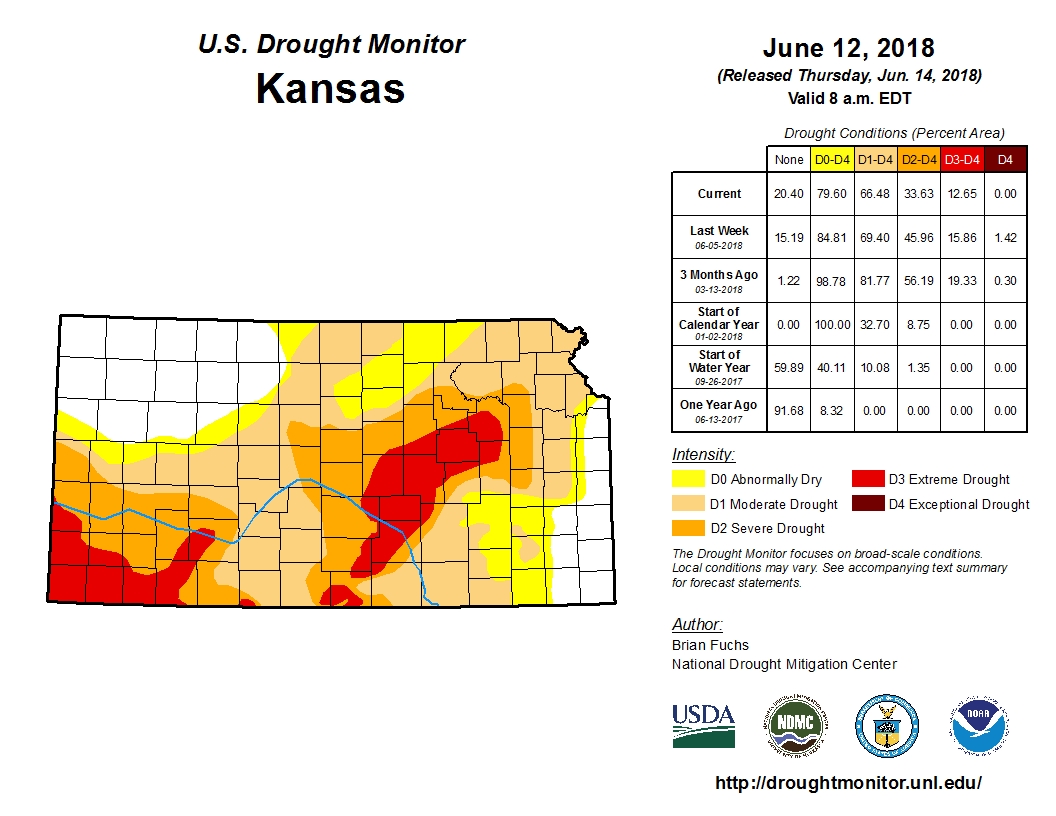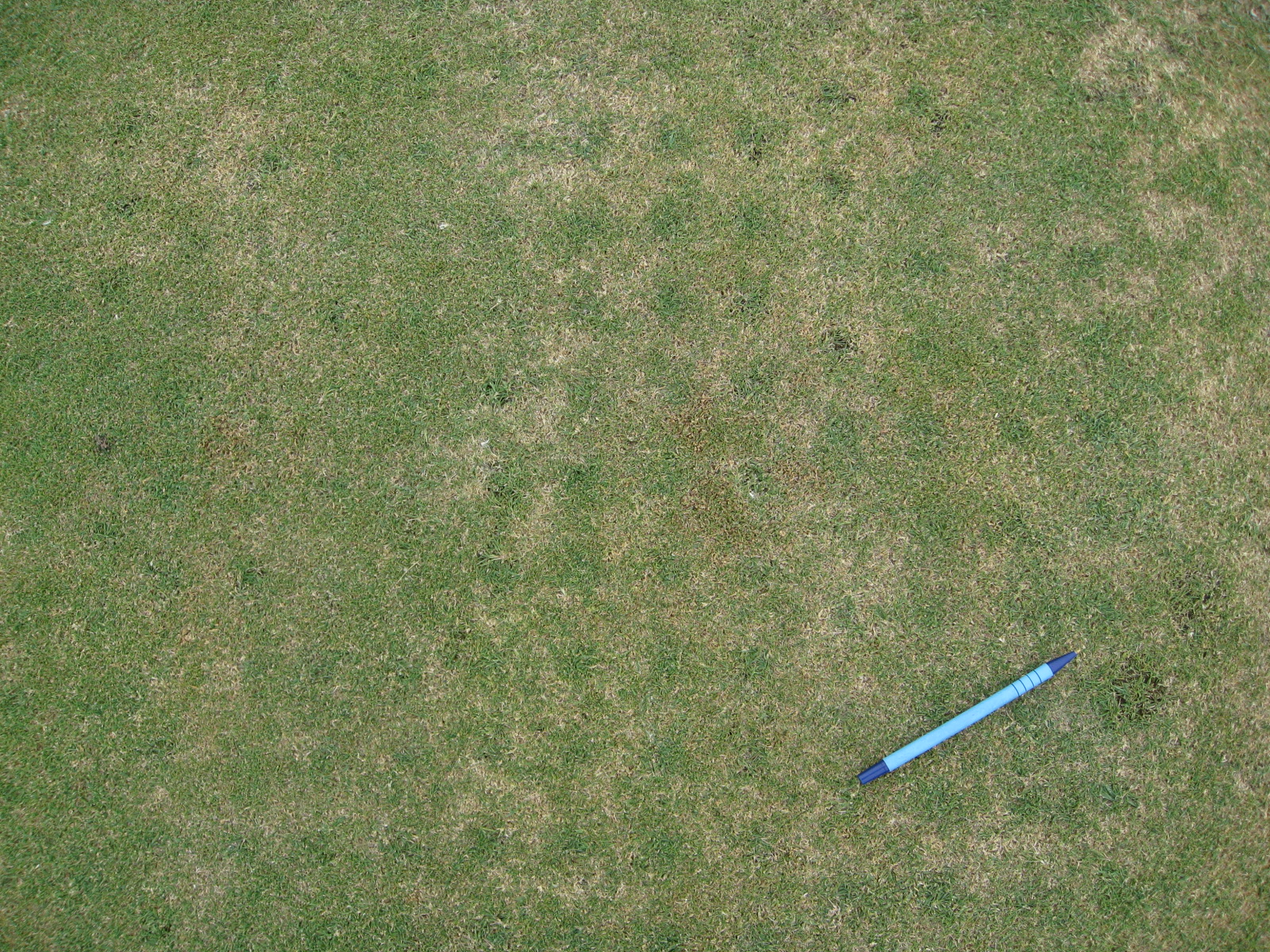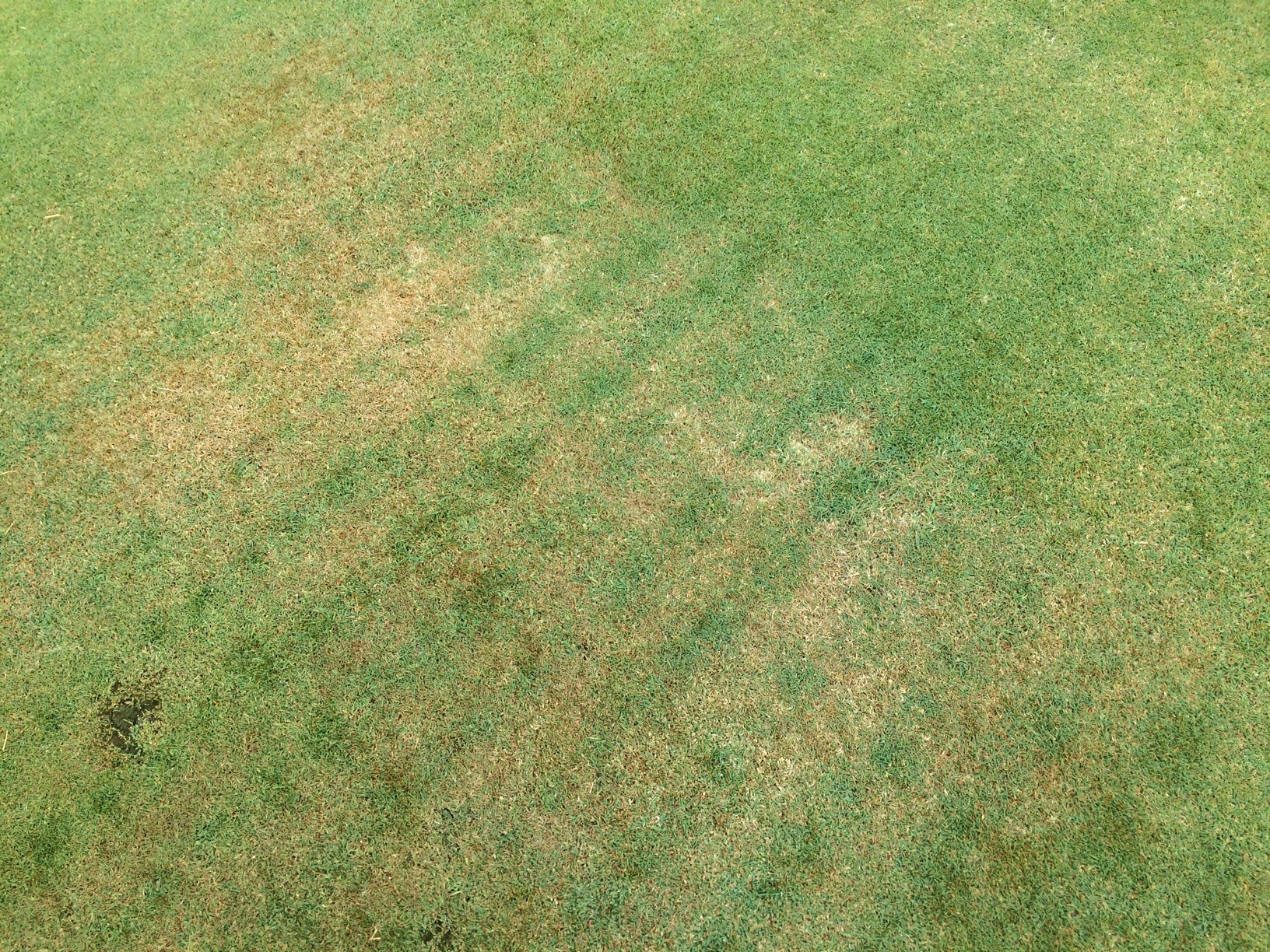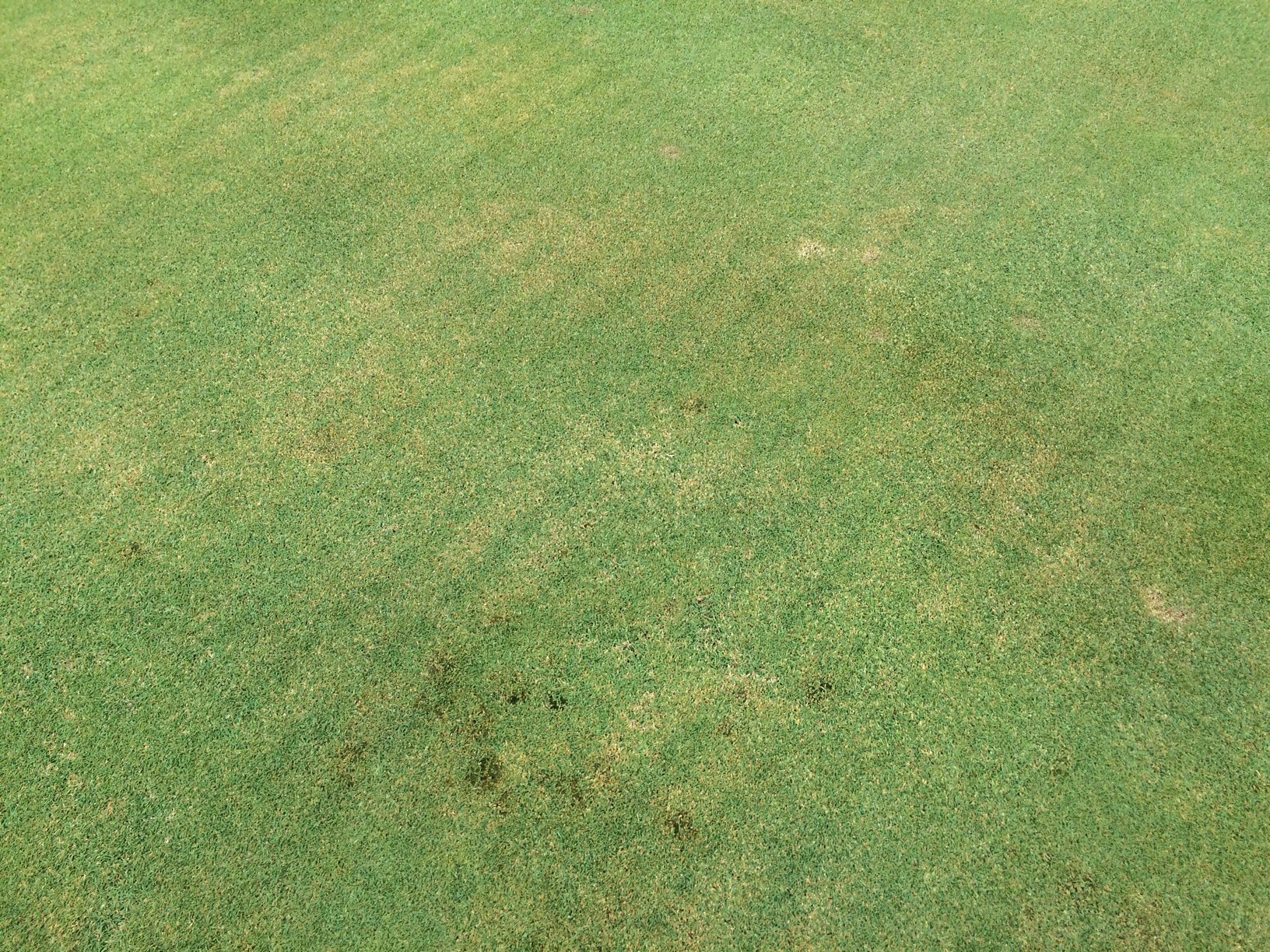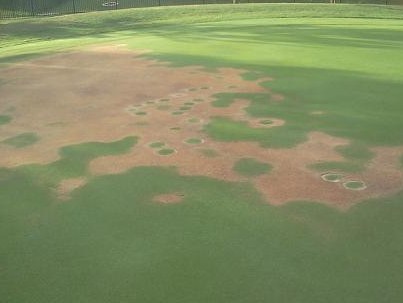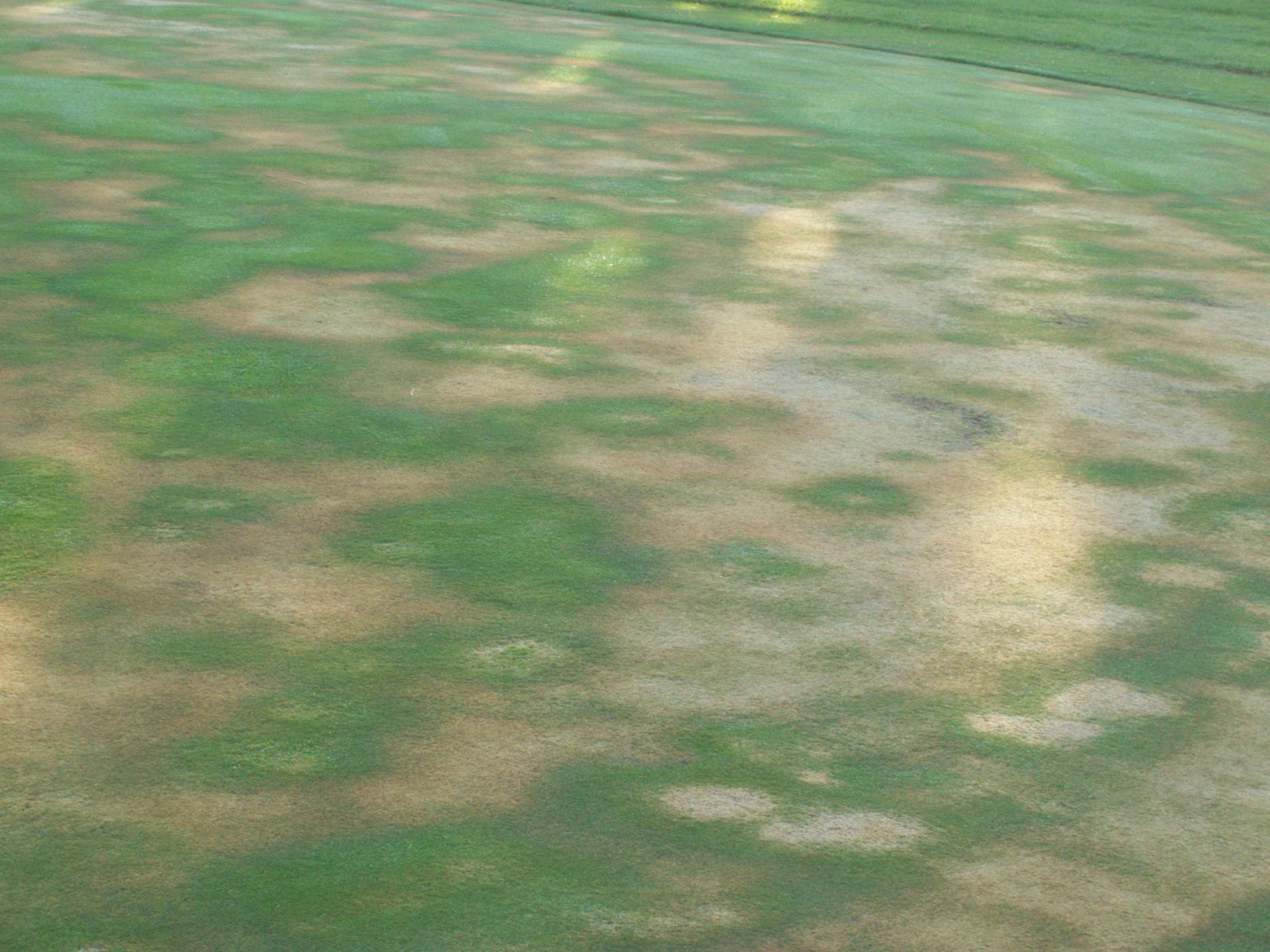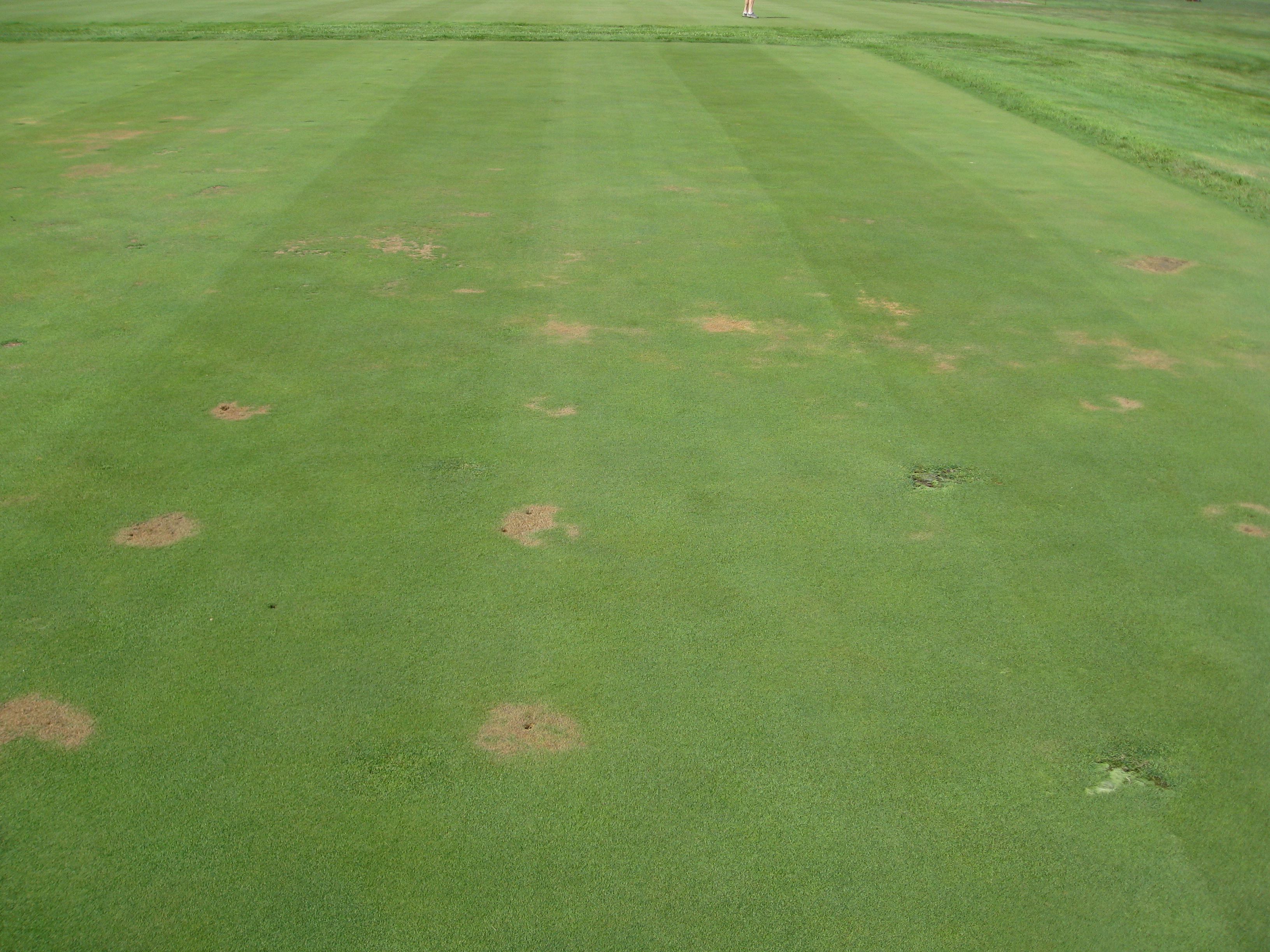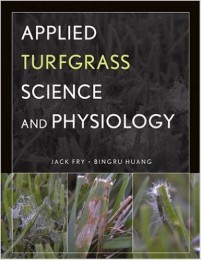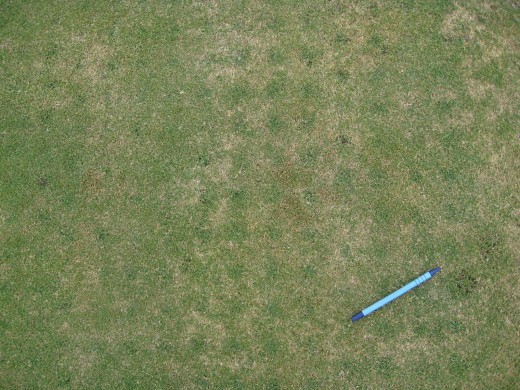(Megan Kennelly, KSU Plant Pathology)
The average daily high for June 15 in Manhattan is 86.1, and the average nightly low is 63. We have been well above those averages. Ugh! June is supposed to be our time of “things are still okay out there… July and August are around the corner, but for now we are fine.” However, this year, August is here now! Along with the heat, it is very dry out there, as shown on the most recent US Drought Monitor map:
What can you do to reduce summer stress in putting greens?
The Chemical Control of Turfgrass Diseases publication (free online!) includes an excellent list of 16 practices that can reduce summertime stress. Are you doing some of those practices already? Yes, you probably are. Are there some you are not trying? Maybe – you might test some out, or talk to your peers about what they are doing. Are some just not feasible for your site? Probably – and that’s okay. Check out the whole menu of 16 options and see if it generates any new ideas. You can find the whole list starting on page 6 of Chemical Control of Turfgrass Diseases which, in short, includes information about mowing height, watering, fertility, foot traffic, dew, phytoxicity warnings, and more.
With that in mind, here are some pictures to illustrate the importance of roots during stressful summer conditions:
